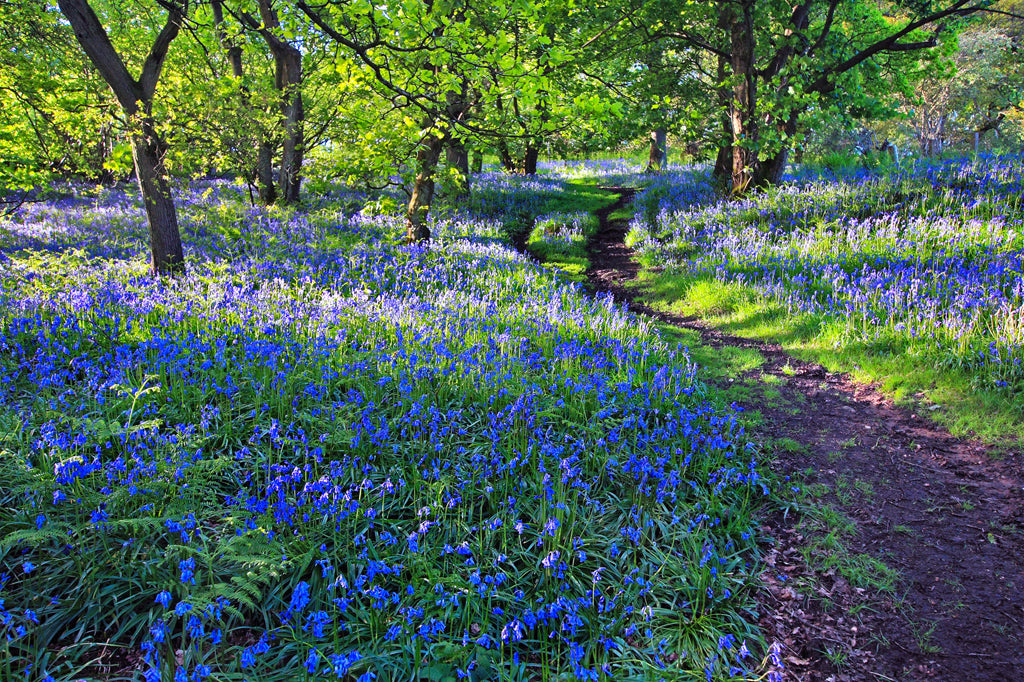Forest of Blue Flowers
In some forests, you can experience a true wonder on a spring walk. Discover the magic of the bluebell.

Blue as far as the eye can see
Although bluebells are an ornamental feature in many parks and private gardens, they are rarely found growing wild in these latitudes. In Germany, there are only a few places where the Atlantic bluebell grows in the wild. The most famous is the small grove between Baal and Doveren in the Heinsberg district in the far west of North Rhine-Westphalia. Depending on the weather, "English conditions" prevail there from mid-April to mid-May. Then, a sea of blossoms made up of tens of thousands of blue flowers can be admired, the so-called "Forest of Blue Flowers." The forest floor is largely covered with a dense blue-green carpet of bluebells, which also have an intoxicating fragrance. This large population is unique in Germany. It is particularly beautiful when the sun's rays flash through the treetops, bathing the blue-hued ground in a magnificent light. The spectacle of the bluebells can also be admired in the Gillenbusch Forest near Glimbach. And you can also experience the “Blue Wonder” in the small forest between Jüllich-Barmen and Floßdorf.
The home of the bluebells
Because bluebells prefer a mild climate, their natural habitat stretches along the Atlantic coasts from Portugal, Spain, and France to Ireland, England, and Scotland. In England, the blue carpets of flowers that cover the forest floor are the epitome of spring. Bluebells are not just harbingers of spring; in some regions, they are also a symbol of humility and gratitude. And beware, if you step on or pick one of these blue flowers while out walking, you'll likely encounter the wrath of the fairies, according to local legend. Bluebells are the typical flower of English beech forests, where almost 50 percent of the world's bluebell population is found. The world's most beautiful bluebell carpets can be found in the so-called woodlands—a true assault on the senses! Bluebells are often indicators of ancient forests. Even if the woods are not old or there are no trees at all, the presence of bluebells can indicate that there was a wood there long ago.
Take a walk on the wild side
In spring, the bluebells can be admired on wonderful woodland walks. The extensive gardens of Lanhydrock House in Cornwall are home to countless bluebells. The garden of Cornwall's most famous stately home is known for its colorful carpet in spring. The Ashridge Estate woodland in Hertfordshire is also home to delicate bluebells. Just a few miles from central London, you'll find a wonderful collection of bluebells beneath the bright green canopy of beech trees in the beech woodlands of the Chiltern Hills. The 106-hectare Blakes Wood woodland in Essex heralds spring with masses of blue flower carpets, as does the wild garden and woodland at Blickling Park in Norfolk. The two hectares of the woodland are a breathtaking shade of blue in spring. Near Manchester, the blue flowers bloom most beautifully in the Hardcastle Crags area. And these are just some of the areas in England where the blooming bluebells enchant us.
TEXT: Victoria Wegner




































































































